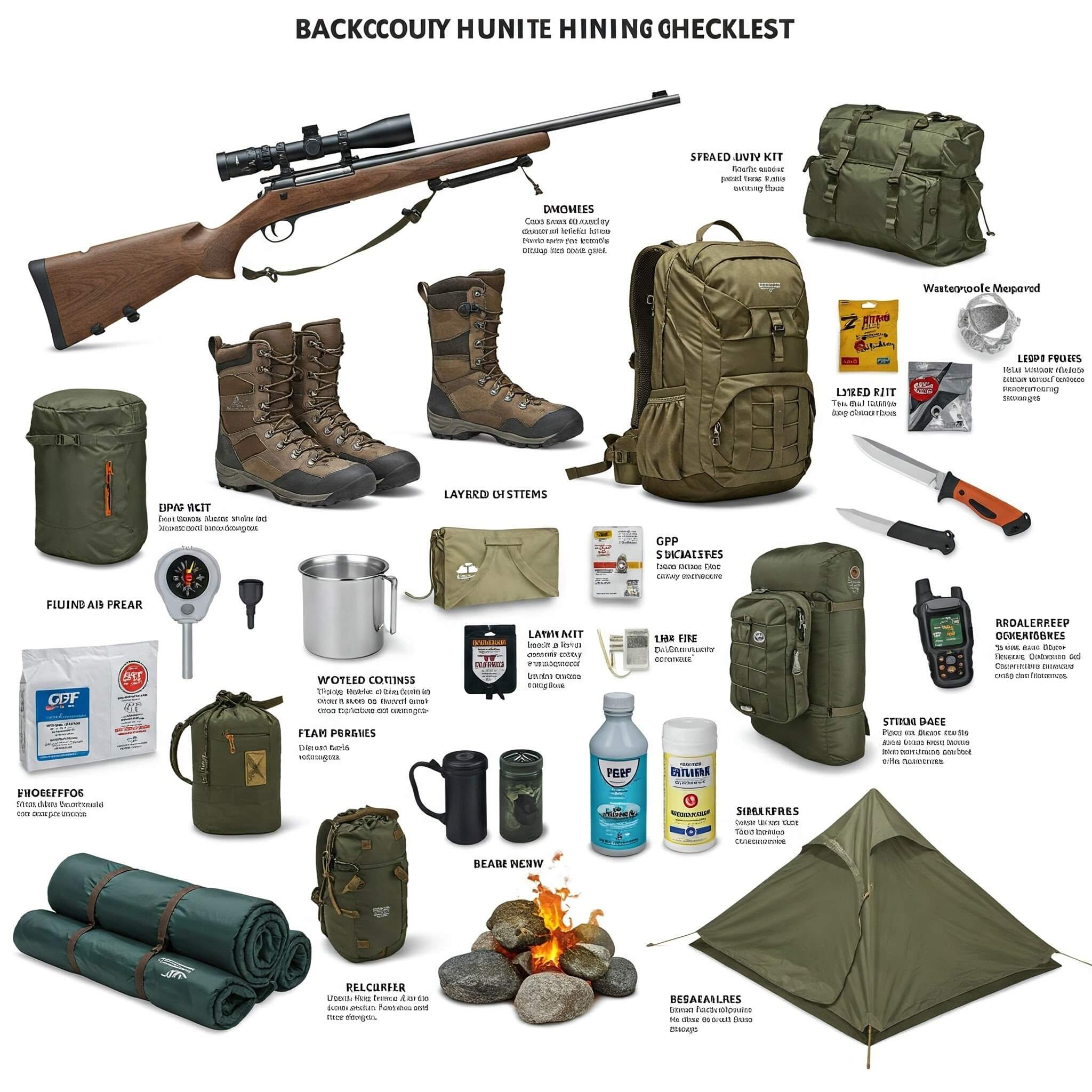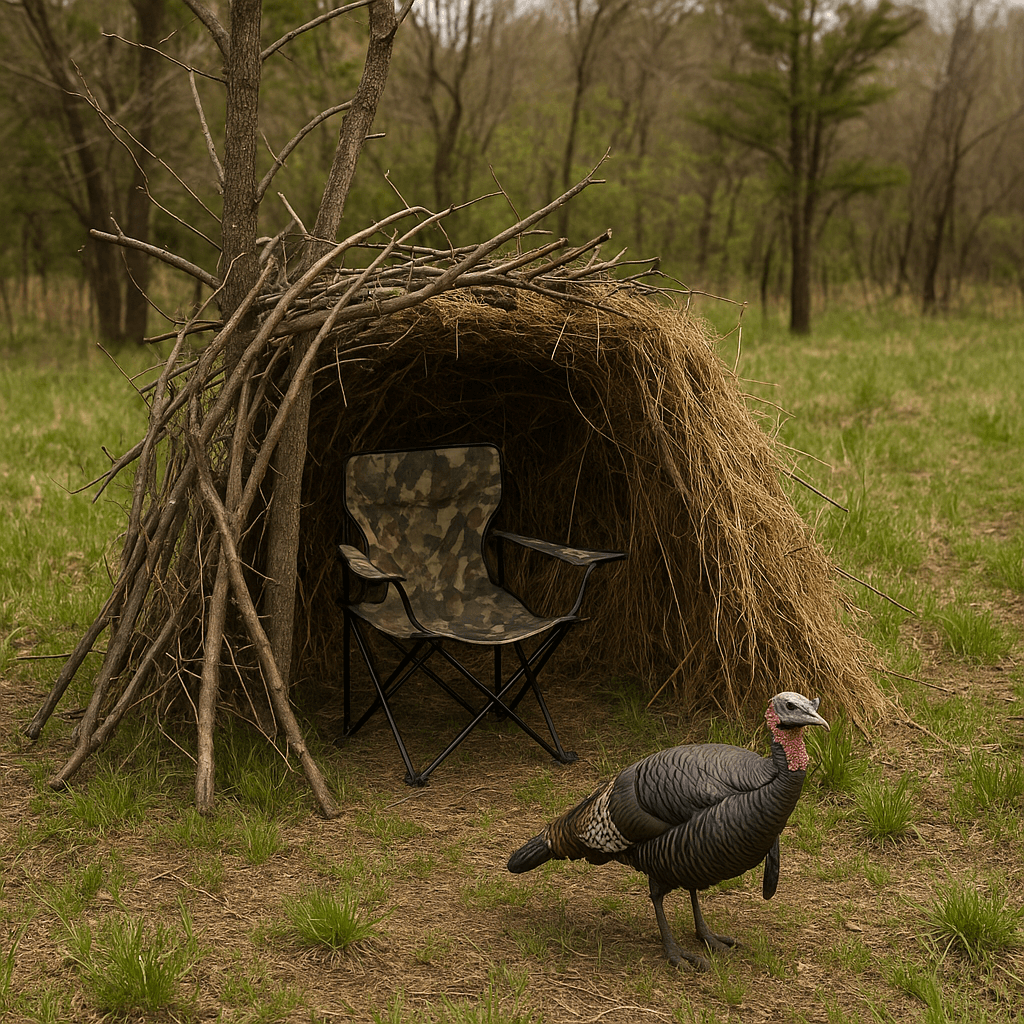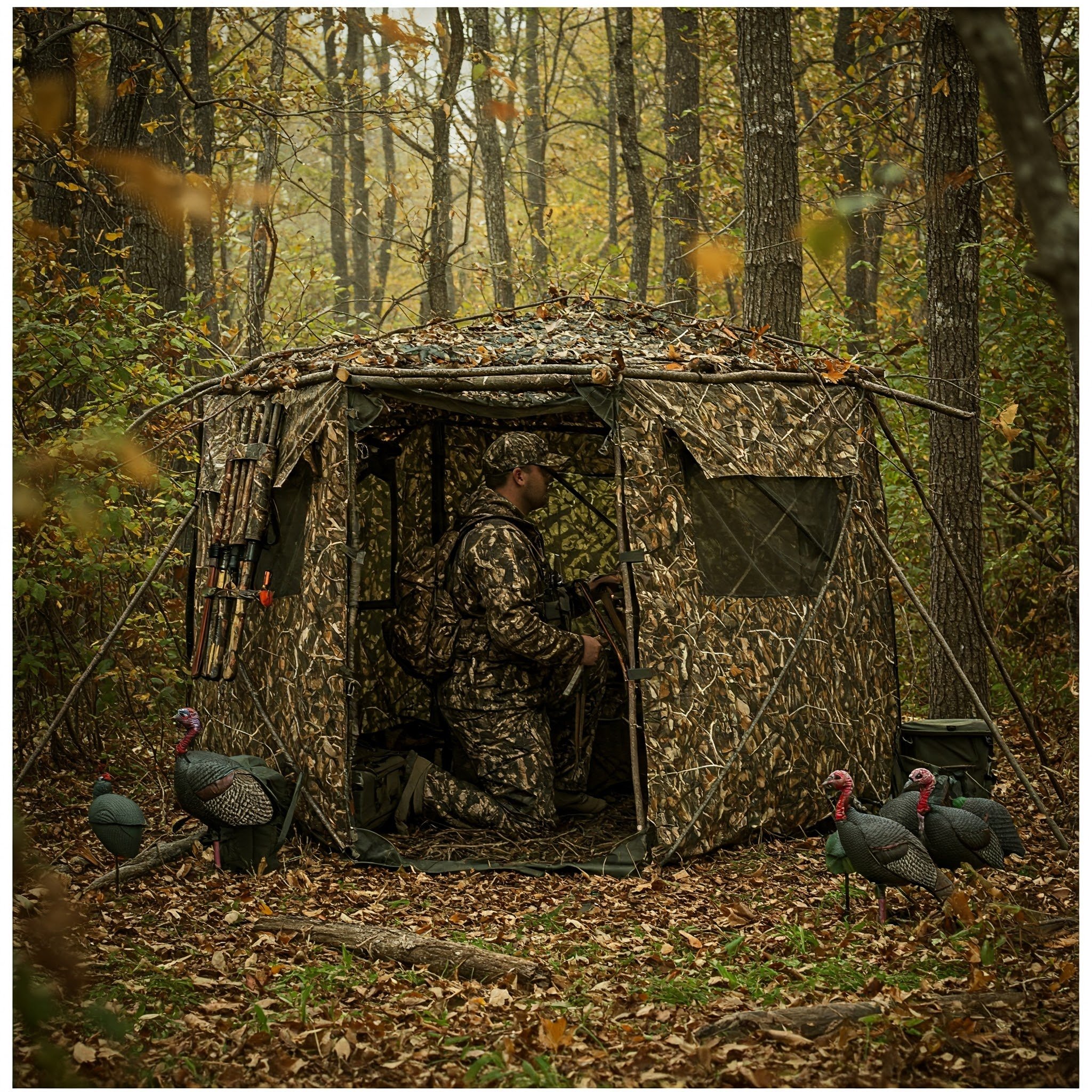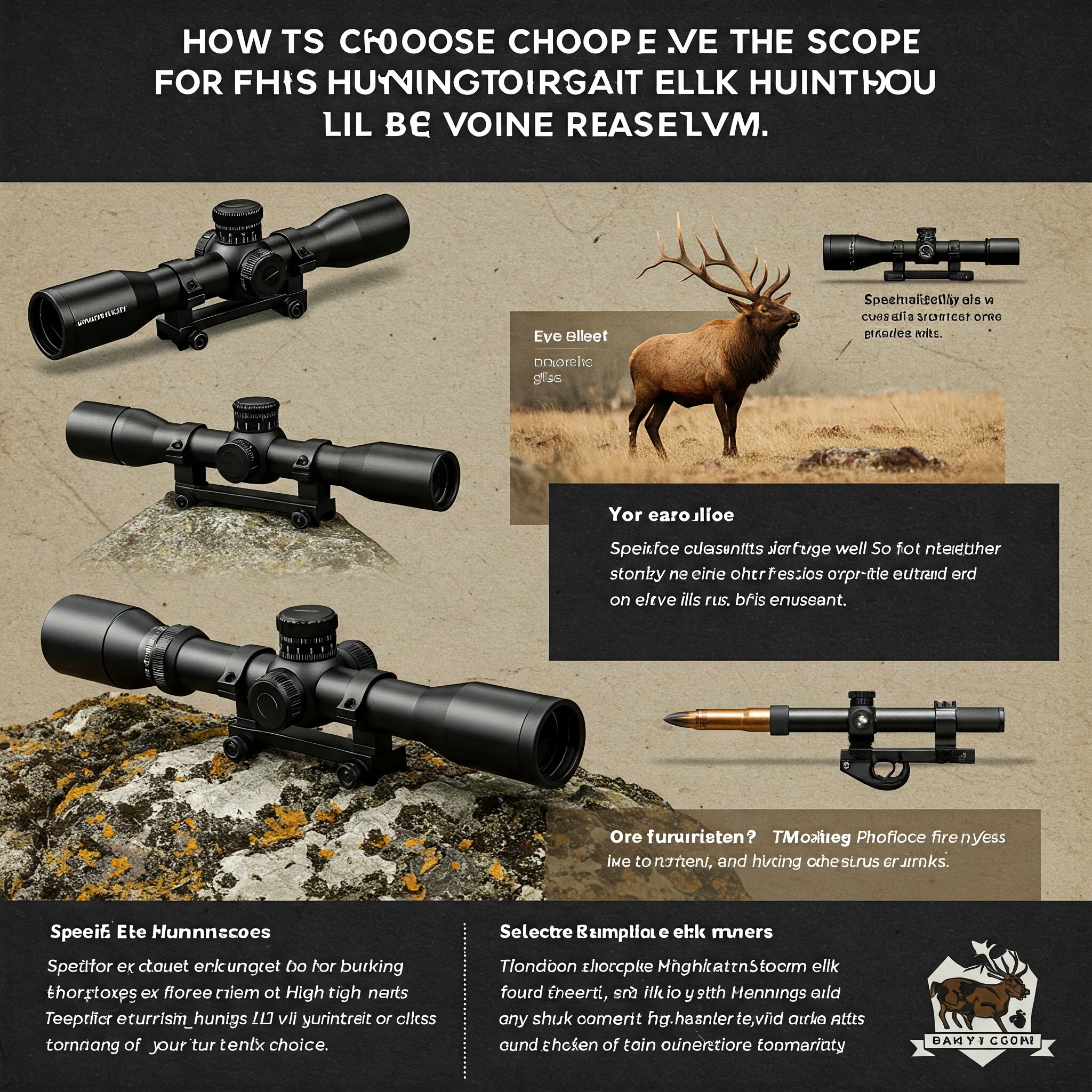Backcountry hunting is one of the most exhilarating ways to connect with nature. It’s just you, the wild, and the pursuit of game in some of the most remote and rugged landscapes on the planet. But to thrive in these challenging environments, preparation is everything. That’s where an essential gear checklist for backcountry hunting comes into play. essential gear checklist for backcountry hunting this guide is your roadmap to packing smart, staying safe, and maximizing your chances of a successful hunt.
In this in-depth article, I'll take you through each item of equipment you'll need, why it's important, and offer practical advice on how to keep your pack light but effective. Whether you're a beginner backcountry hunter or an old pro, essential gear checklist for backcountry hunting this must-have gear list for backcountry hunting will have you prepared for whatever the wilderness has in store for you. Let's begin!
Why an Essential Gear List for Backcountry Hunting Is Necessary
Compared to a rushed day hunt within reach of civilization, backcountry hunting puts you well out of reach of roads, cell range, and access to assistance. You're having everything on your back, in the face of unpredictable weather, rugged terrain, and the physiological challenges of hunting. Without an organized list of essential gear to take backcountry hunting, you're at risk of being woefully unprepared for emergencies, forgetting essential tools, or overweighting yourself.
Here's why a list is important:
Safety first: The proper gear assists you in navigating, staying warm, and dealing with injuries or the unexpected.
Weight management: Every ounce counts when you're hiking miles into the backcountry. A checklist ensures you prioritize.
Hunt success: From seeing game to processing your harvest, the proper equipment enhances your efficiency and effectiveness.
Let's get into the backcountry hunting essential gear checklist, categorized, to assist you in packing like a pro.
Navigation and Safety Equipment in Your Backcountry Hunting Essential Gear Checklist
When you are miles from the nearest town, becoming lost or hurt can ruin a good trip and make it a hazardous one. Your backcountry hunting essential gear checklist begins with navigation and safety equipment to ensure you stay on track and safe.
GPS, Maps, and Compass for Unshakeable Navigation
A good GPS unit is a staple of your backcountry hunting gear list. New models such as the Garmin inReach Mini 2 provide real-time tracking, SOS capability, and even two-way messaging in no-cell areas. But electronics can malfunction, essential gear checklist for backcountry hunting so always bring a topographic map and compass as backups. These low-tech gadgets are light, don't use batteries, and can bail you out if your GPS fails.
Pro tip: Prior to your adventure, download offline maps onto your phone via apps such as onX Hunt or Gaia GPS. Identify major waypoints such as your campsite, waterholes, and hunting areas to keep yourself oriented.
First Aid Kit for Managing Emergencies
A small, fully-stocked first aid kit is not optional on your list of backcountry hunting essentials. Opt for a kit that includes the basics such as bandages, antiseptic wipes, painkillers, medical tape, and tourniquet for serious bleeding. essential gear checklist for backcountry hunting because long trails punish your feet, bring blister remedies such as moleskin or Leukotape.
Pro tip: Learn wilderness first aid to know how to treat common backcountry wounds, from scrapes to sprains. Knowledge is featherweight and may save a life.
Emergency Communication Devices
In the wilderness, your cell phone is typically worthless for phone or text communications. That is why a satellite messenger or personal locator beacon (PLB) needs to be included on your backcountry hunt list of absolute essentials. Equipment such as the SPOT X or Garmin inReach Mini enables you to call for help or let family and friends know where you are even if you're nowhere in particular.
Example: The ACR ResQLink 400 PLB is a disposable one-time device for extreme emergencies, whereas the inReach provides more flexible means of communication.
Firestarter for Survival
A fire can warm you, cook your meals, and be used for signaling. Your backcountry hunting checklist of essential gear should include a waterproof lighter, stormproof matches, or a ferro rod. Bring some tinder, such as cotton balls dipped in petroleum jelly or essential gear checklist for backcountry hunting commercial fire starters, so that you'll be able to get a fire burning in damp conditions.
Pro tip: Practice initiating a fire under harsh conditions prior to your hunt. It's an art that needs to be honed over time.
Clothing and Shelter on Your Must-Have Checklist of Gear for Backcountry Hunting
The backcountry is well-known for its unreliable weather—sun one minute, snowing the next. an essential gear checklist for backcountry hunting clothing and shelter to keep you dry, warm, and comfortable is what your must-have checklist of gear for backcountry hunting must include.
Layering for Every Condition
Layering up is the best method to change with temperature and activity levels. Here's how to construct your clothing system:
Base layer: Select moisture-wicking fabrics such as merino wool or synthetic materials to stay dry on your skin. Companies such as Smartwool or First Lite make great choices essential gear checklist for backcountry hunting .
Mid-layer: A fleece jacket or light puffy (such as a Patagonia Nano Puff) offers insulation in cooler temperatures.
Outer layer: A waterproof, breathable shell (like Gore-Tex or eVent) protects against rain, snow, and wind. Look for jackets and pants with pit zips or ventilation for breathability during strenuous hikes.
Pro tip: Avoid cotton at all costs—it traps moisture and can lead to hypothermia. Stick to wool or synthetics for all layers.
High-Quality Hunting Boots
Your feet are your greatest asset in the backcountry, so spend money on tough, waterproof hunting boots with good ankle support. Kenetrek, Crispi, or essential gear checklist for backcountry hunting salomon are top picks with backcountry hunters for their toughness and comfort on rough ground.
Tip: Break in your boots several weeks prior to your trip to avoid blisters. Bring lightweight camp shoes, such as Crocs or minimalist sandals, for lounging at camp.
Shelter for Overnight Adventures
If your hunt involves overnight stays, a lightweight shelter is critical on your essential gear checklist for backcountry hunting. A two-person tent weighing under 3 pounds, like the Big Agnes Fly Creek UL2 or Nemo Hornet, offers a good balance of space and portability. For ultralight setups, a bivy sack or tarp with trekking poles can work, essential gear checklist for backcountry huntingbut only if you’re experienced with minimalist camping.
Pro tip: Practice establishing your shelter in windy or rainy weather so you can do it rapidly in the field.
Sleeping System for Comfort
A good night’s sleep is essential for staying sharp on the hunt. Your essential gear checklist for backcountry hunting should include a lightweight sleeping bag rated for the expected temperatures (aim for 20°F or lower for most fall hunts) and a sleeping pad for insulation and comfort. Look for bags with synthetic or down fill, like the Mountain Hardwear Bishop Pass or Sea to Summit Spark.
Example: The Therm-a-Rest NeoAir XLite sleeping pad is super light and compact, perfect for backcountry adventures.
Hunting Gear in Your Backcountry Hunting Essential Gear Checklist
Your gun and accompanying tools are the heart of your hunt. The backcountry hunting essential gear checklist has all that you need to sight, harvest, and prepare game effectively.
Firearm or Bow
Your weapon of choice is based on your personal preference and the game you're after. When it comes to backcountry hunting, light is right. A bolt-action rifle in a versatile caliber such as.308 Winchester, 6.5 Creedmoor, or.300 Win Mag is a favorite for large game such as elk or deer. If archery is your thing, a compact compound or recurve, such as Hoyt or Mathews, is the ticket.
Pro tip: Practice shooting from different distances and angles to acclimate yourself for the unpredictable environments of the backcountry.
Spotting and Scouting Optics
Good optics can make or break your hunt. Your backcountry hunting essential gear checklist should consist of:
Binoculars: A 10x42 pair of binoculars (such as Vortex Viper or Leupold BX-4) assists you in spotting game from afar.
Spotting scope: For long-range scouting, a lightweight scope like the Vortex Razor HD 11-33x50 is worth the weight.
Rangefinder: A laser rangefinder ensures accurate shot placement, especially at longer distances.
Pro tip: Invest in a binocular harness to keep your optics secure and accessible while hiking.
Game Processing Tools
After a successful harvest, you’ll need to field-dress and pack out your game. Your essential gear checklist for backcountry hunting should include:
A keen, light knife (e.g., Havalon Piranta or Benchmade Steep Country).
Game bags to cover the meat and protect it from flies and dirt.
Paracord or rope to hang meat off the ground and out of predators' reach.
Nitrile gloves for keeping your hands clean while processing.
Pro tip: Master proper field-dressing skills and rehearse them at home to conserve time and effort in the field.
Ammunition or Arrows
Bring sufficient ammunition or arrows for your hunt, with some spares to practice or in case of emergencies. For rifles, 20 to 30 shots are adequate; for bows, bring 6 to 12 arrows with broadheads appropriate to your quarry.
Example: Broadheads such as the G5 Montec or Rage Hypodermic work well for big game.
Food and Water on Your Essential Gear Checklist for Backcountry Hunting
Backcountry hunting and backpacking consume major calories, and your backcountry hunting essential gear list must incorporate sufficient food and water to provide you with the energy and hydration you need.
High-Calorie Meals and Snacks
Bring light, calorie-dense food to energize your body. Brands like Mountain House, Peak Refuel, or Backpacker's Pantry offer easy-to-prepare freeze-dried foods that are calorie-rich. Pack 2,500–4,000 calories each day based on your activity level and size. Supplement with energy bars, trail mix, peanut butter packets, and jerky for quick energy.
Pro tip: Taste meals at home to make sure you like the flavors. A poorly tasting meal can ruin your mood in the field.
Water Purification Systems
It's inconvenient to carry all your water, so a trusty purification system is on your must-have equipment list for backcountry hunting. A light filter such as the Sawyer Squeeze or Katadyn BeFree eliminates bacteria and protozoa from streams and lakes. In backup, bring purification tablets or a UV purifier such as the SteriPEN.
Pro tip: Map-scout water sources beforehand and always treat water, even if it appears clean.
Hydration Reservoirs and Bottles
A hydration reservoir (such as a 2-liter Platypus or CamelBak) allows you to sip water while on the go. Combine it with a light water bottle for use in camp or as a secondary option.
Example: The Nalgene Ultralite bottle is crushproof and weighs almost nothing.
Packing Smart with Your Essential Gear Checklist for Backcountry Hunting
A heavy pack can weight you down and drain your energy, so your backcountry hunting essential gear checklist must prioritize lightweight, multi-use items and a well-organized pack.
Choosing the Right Backpack
Your pack is your lifeline, holding all your gear for days in the backcountry. Choose a pack with 50–80 liters of space, a rugged frame, and supportive shoulder straps and hip belts. Companies such as Kuiu, Exo Mountain Gear, Stone Glacier, and Mystery Ranch are made specifically for hunters.
Tip: Try out your pack with weight at home to make sure it fits right and distributes weight evenly.
Weight-Saving Strategies
Cutting weight without compromising functionality is an art. Here are some tips to lighten your load:
Share equipment such as stoves or first aid kits with a hunting buddy.
Select multi-purpose items, such as a bandana that can be used as a towel, filter, or pot scrubber.
Trim excess packaging from food and equipment, repackaging meals into lightweight zip-lock bags.
Select ultralight versions of equipment, such as titanium cookware or a minimalist sleeping pad.
Example: The MSR PocketRocket 2 stove is small, weighs only 2.6 ounces, and boils water quickly.
Packing for Balance
A poorly packed backpack can make hiking a nightmare. Put heavy loads (such as food and water) near your back and in the center of the pack to keep things balanced. Store frequently used items, such as your GPS or snacks, in easy-to-reach pockets.
Pro tip: Use compression sacks to compress bulky gear such as your sleeping bag and clothing.
Miscellaneous Items on Your Essential Gear Checklist for Backcountry Hunting
Certain small things can make a big difference to your comfort level and safety. Don't forget these on your essential gear checklist for backcountry hunting.
Headlamp and Batteries
A headlamp is crucial for nocturnal travel, camp setup, or hunting game in the evenings. Opt for a model with 300 lumens or more and adjustable brightness, such as the Black Diamond Spot 400 or Petzl Actik Core. Bring extra batteries or a rechargeable model along with a portable power bank.
Pro tip: Bring a spare light, such as a keychain LED, in case your main headlamp breaks.
Gear Fix Repair Kit
Gear may malfunction in the field, so include a small repair kit in your pack with duct tape, zip ties, a multi-tool, and a simple sewing kit for mending clothing or packs. Several feet of paracord may also be useful for repairs or other purposes.
Example: The Leatherman Signal multi-tool features a knife, pliers, and other handy functions in one neat package.
Stability Trekking Poles
Trekking poles save your knees from strain and enhance balance on rough ground. They can also be used as tent poles or as a means of crossing streams. Opt for foldable models such as the Black Diamond Alpine Carbon Cork.
Pro tip: Use poles on inclines to acclimatize yourself to their advantages.
Insect Repellent and Sun Protection
Bugs and sun can ruin your trip. Bring a small bottle of DEET-based repellent or permethrin-treated clothing to repel mosquitoes and ticks. For sun protection, bring sunscreen, lip balm with SPF, and a lightweight hat or buff.
Example: Sawyer's Picaridin lotion works well and is less irritating than DEET.
Preparing to Use Your Essential Gear Checklist for Backcountry Hunting
Having the equipment is just half the battle. To get the most out of your backcountry hunting essential gear checklist, do the following:
Test your equipment: Pitch your tent, prepare a meal using your stove, and fire your rifle in practical conditions. Familiarity breeds confidence.
Seasonalize: Modify your checklist according to weather and game. Elk hunting during early fall needs different equipment than deer hunting during late winter.
Leave an itinerary: Provide your schedule, route, camp sites, and estimated return date to a close friend or relative. Include phone numbers for emergency contacts.
Check local regulations: Make sure your equipment meets the hunting regulations, particularly for firearms, ammunition, and game processing.
Train physically: Backcountry hunting is demanding. Practice hiking with a loaded pack to build endurance and test your gear.
Pro tip: Create a physical or digital copy of your essential gear checklist for backcountry hunting to check off items as you pack.
Common Mistakes to Avoid with Your Essential Gear Checklist for Backcountry Hunting
Even experienced hunters can make packing mistakes. Here are some pitfalls to watch out for:
Overpacking: Bringing "just in case" gear weighs you down and slows you up. Stay minimal.
Skipping backups: Always carry redundant systems for key gear, such as navigation (GPS + map) and fire-starting (lighter + ferro rod).
Ignoring weight distribution: An unbalanced pack can lead to backache or injuries.
Not testing gear: Unfamiliar gear can let you down in the field. Test everything first.
Underestimating weather: The backcountry is unstable. Prepare for the worst, even if the weather forecast appears to be clear.
Last Thoughts on Your Backcountry Hunting Essentials Checklist
Backcountry hunting is a thrilling, challenging pursuit that demands respect for the wilderness and meticulous preparation. With a well-planned essential gear checklist for backcountry hunting, you’ll be equipped to handle the rugged terrain, unpredictable weather, and physical demands of the hunt while staying safe and comfortable.
Before you leave, double-check your backcountry hunting essential gear list one last time. Cut out the unnecessary items, check your equipment, and make sure you're physically and mentally prepared for the adventure. The backcountry is harsh, but with the proper gear and attitude, it's also one of the most rewarding experiences you'll ever have.
So, load up your pack, double-check your essential gear checklist for backcountry hunting, and embark on a hunt you’ll remember for a lifetime. Happy hunting!





